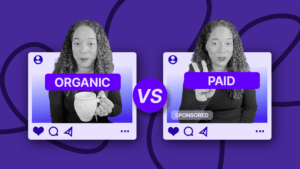Top 7 InSense Alternatives to Try Out This Year
After bouncing around tech start-ups and university literature programs, Joe has finally settled down as Billo’s Head of Content. Joe now spends his days writing ads about ads, teaching clients how to craft killer content, and combing through our web copy with a bold red Sharpie.
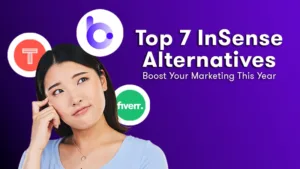
When seeking alternatives to InSense, you want platforms that excel in user-generated content and influencer marketing.
Each option offers unique features to meet different brand needs. From custom video content to comprehensive campaign management, these platforms can boost your marketing strategy.
Here are 7 top alternatives to consider.
1. Billo
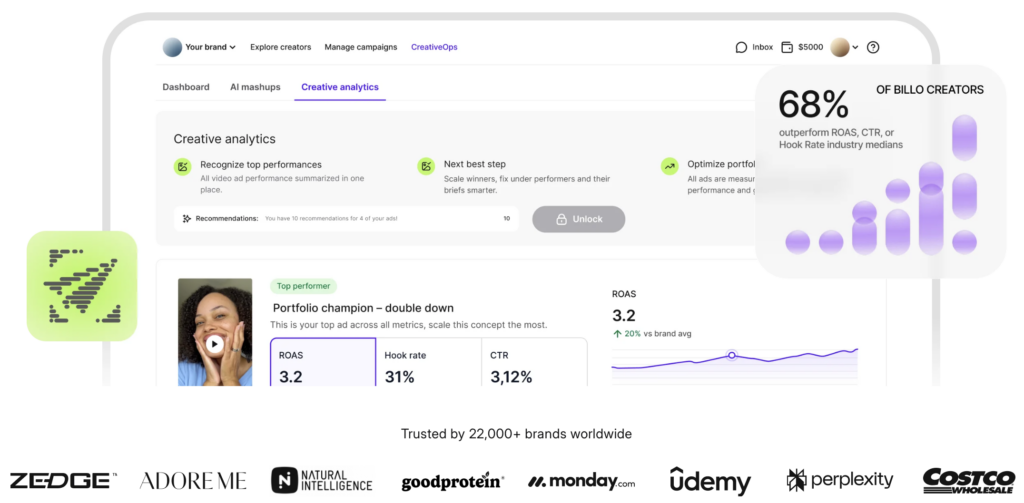
Brands use Billo not just to create UGC, but to launch data-backed creator ads that scale into a growth channel.
Unlike simple marketplaces, Billo’s Creator Marketing Stack connects brands with vetted creators and layers on performance insights to ensure every video is built to convert. With a focus on TikTok, Meta (Facebook & Instagram), and YouTube Shorts, Billo helps teams move beyond guesswork into predictable, repeatable results.
With a network of 5,000+ vetted creators and a track record of 200,000+ videos produced for 22,000 brands, Billo combines authenticity with proof. Every ad runs through Billo’s CreativeOps™ loop, so each launch feeds performance data back into the system, making the next campaign even stronger.

Pricing starts at $99 per video, with no hidden fees. The streamlined workflow makes it simple: define your goals → generate a data-powered brief → get matched with proven creators → launch ad-ready videos.
Key Features:
- Performance-Driven Content: Ads shaped by insights from 150,000+ creator campaigns.
- Data-Backed Creator Matching: Choose from creators proven to deliver in your niche.
- End-to-End Workflow: Briefing, chat, revisions, delivery, and performance dashboards all in one place.
- Compounding Results: Each campaign improves the next by feeding performance data back into the stack.
| Pros | Cons |
| Authentic videos built on data, not guesswork | Focused solely on video ads (not static content or sponsorships) |
| Transparent pricing and scalable content output | Tailored for performance marketers vs. influencer-led campaigns |
| End-to-end workflow that saves time and reduces admin | |
| Proven success with 22,000+ brands |
2. Heartbeat
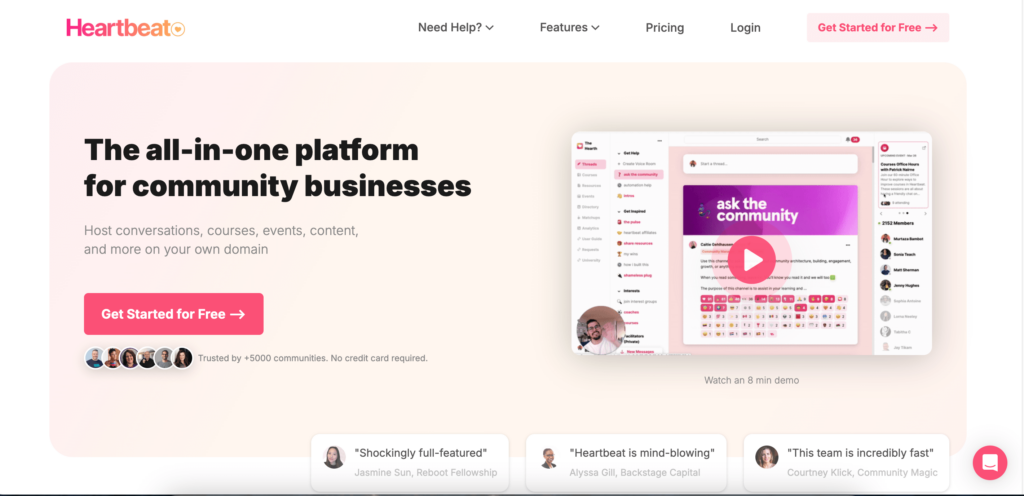
Heartbeat connects brands with micro-influencers, focusing on authentic engagement and content from everyday consumers. This approach reaches a broader audience with genuine content.
Key Features:
- Micro-Influencer Network: Access to a broad network of micro-influencers.
- Authentic Engagement: Emphasizes real interactions and relatable content.
- Cost-Effective: More affordable than high-profile influencers.
| Pros | Cons |
| Genuine engagement through micro-influencers | Less control over content |
| Affordable option for influencer marketing | Variable content quality |
3. TINT
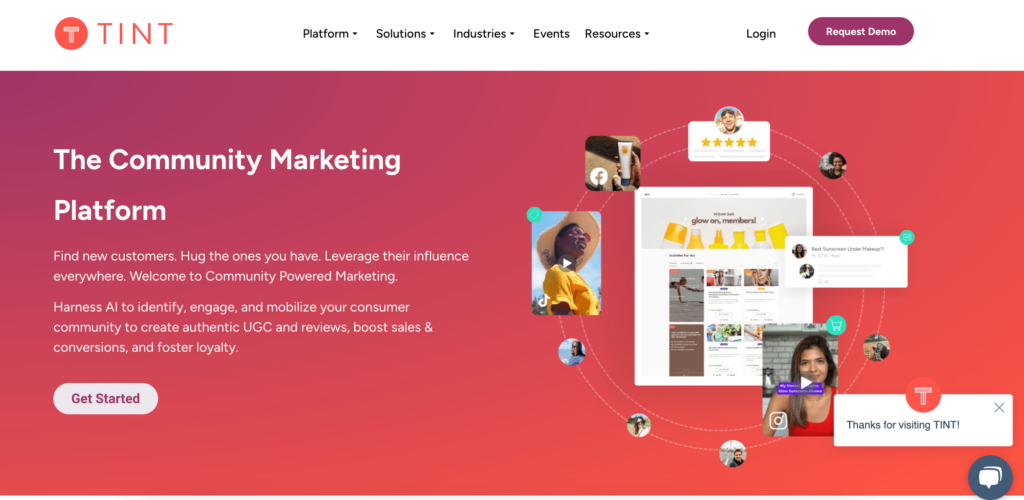
TINT curates and displays social media content to enhance engagement and trust. It integrates user-generated content into marketing campaigns, websites, and digital displays.
Key Features:
- Content Aggregation: Gathers social media content for marketing use.
- Enhanced Engagement: Builds trust through genuine user content.
- Customization: Tailors displayed content to match campaign goals.
| Pros | Cons |
| Excellent for leveraging social media content | Relies on existing content |
| Enhances authenticity and user engagement | Success depends on user-generated content |
4. Fiverr & Upwork

Fiverr and Upwork are freelance marketplaces offering various services, including content creation and marketing strategy. They connect brands with freelancers possessing diverse skills.
Key Features:
- Versatile Services: Wide range of services from global freelancers.
- Flexible Engagements: Hire freelancers for short-term or ongoing projects.
| Pros | Cons |
| Versatile and accessible | Variable quality of work |
| Flexible engagement options | Requires active project management |
| Cost-effective |
5. Upfluence
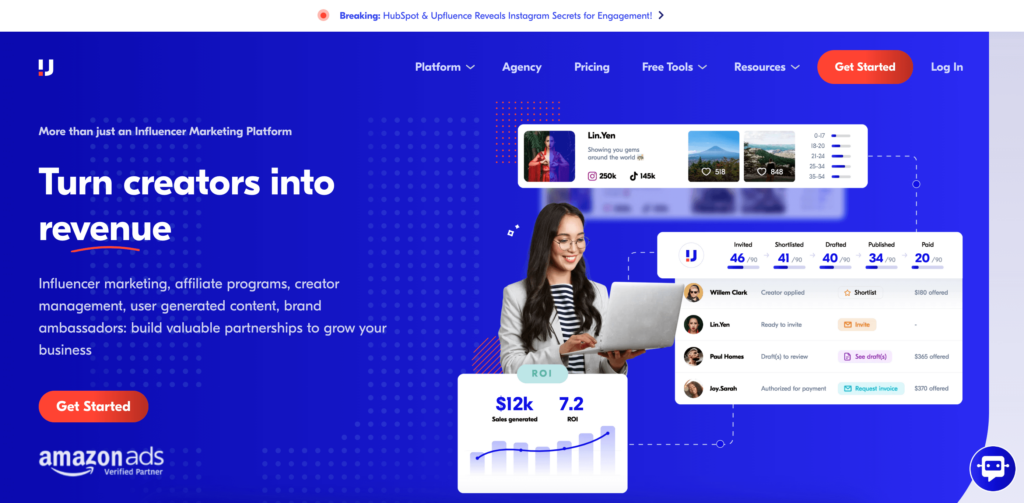
Upfluence offers powerful search capabilities and robust campaign management features, making it easy for brands to find influencers and manage campaigns effectively.
Key Features:
- Search Capabilities: Tools to find the right influencers.
- Integrated Management: End-to-end campaign management.
| Pros | Cons |
| Powerful search tools | Complex interface for beginners |
| Comprehensive campaign management | Best for brands with substantial budgets |
| Detailed analytics |
6. TRIBE
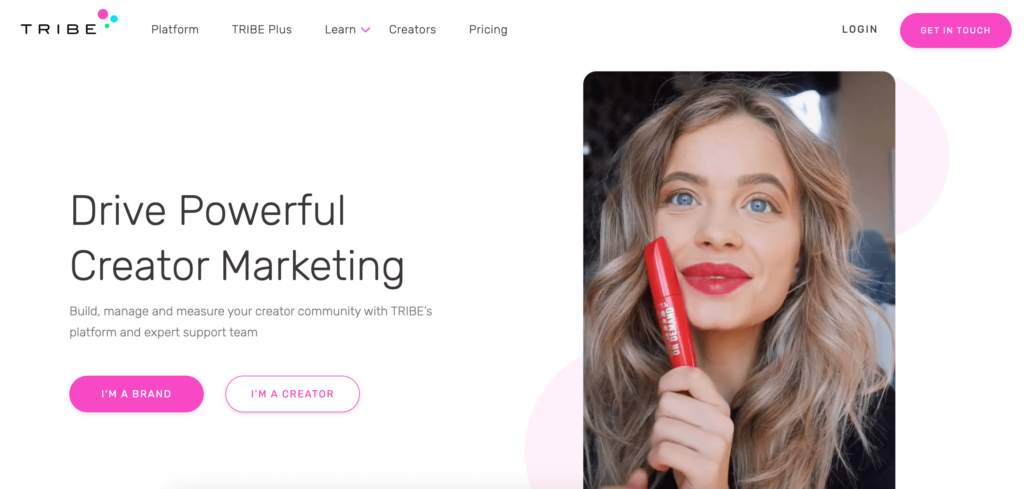
TRIBE is a marketplace where creators provide pre-made content in response to a brand’s brief. Brands can evaluate submissions and purchase content that suits their needs.
Key Features:
- Efficient Content Procurement: Quickly obtain pre-made content.
- Cost-Effective: Avoids costs of custom content creation.
| Pros | Cons |
| Rapid and efficient content selection | Limited customization |
| Cost-effective options | Variability in content quality |
Find more inspiration with the best Collabstr alternatives.
7. JoinBrands
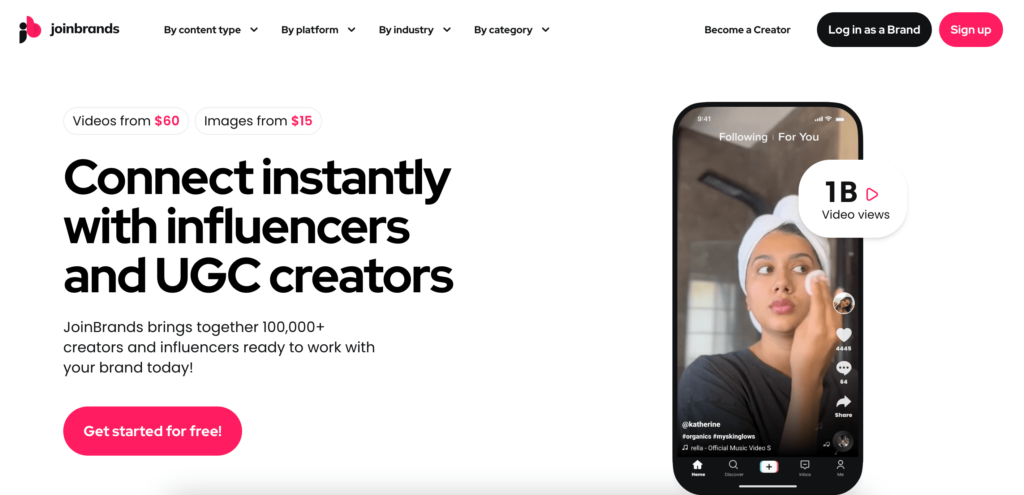
JoinBrands enables direct collaboration between brands and content creators. It’s ideal for brands wanting to be hands-on in the creative process.
Key Features:
- Direct Collaboration: Facilitates interaction for customized content.
- Creator Choice: Allows creators to choose projects matching their interests.
| Pros | Cons |
| Highly customized content | Niche focus may not suit broad campaigns |
| Passionate and authentic creator content | Reliance on active participation from creators and brands |
These platforms provide strong alternatives to InSense, each offering unique features to enhance your marketing efforts through user-generated content and influencer marketing. Depending on your brand’s needs, budget, and goals, these options can effectively elevate your marketing strategy.
Head of Content
After bouncing around tech start-ups and university literature programs, Joe has finally settled down as Billo’s Head of Content. Joe now spends his days writing ads about ads, teaching clients how to craft killer content, and combing through our web copy with a bold red Sharpie.

Authentic creator videos, powered by real performance data
22,000+ brands use Billo to turn UGC into high-ROAS video ads.
Common UGC Brief Mistakes Brands Still Make in...
A vague or overpacked brief derails campaigns before they start, [...]...
Read full articleOrganic UGC vs Paid UGC: How Top Brands Drive Gr...
More brands are turning to user-generated content (UGC) to fuel [...]...
Read full articleOrganic UGC: How to Turn Native Creator Posts in...
Short-form feeds spotlight content that feels natural, not like ads. [...]...
Read full article



